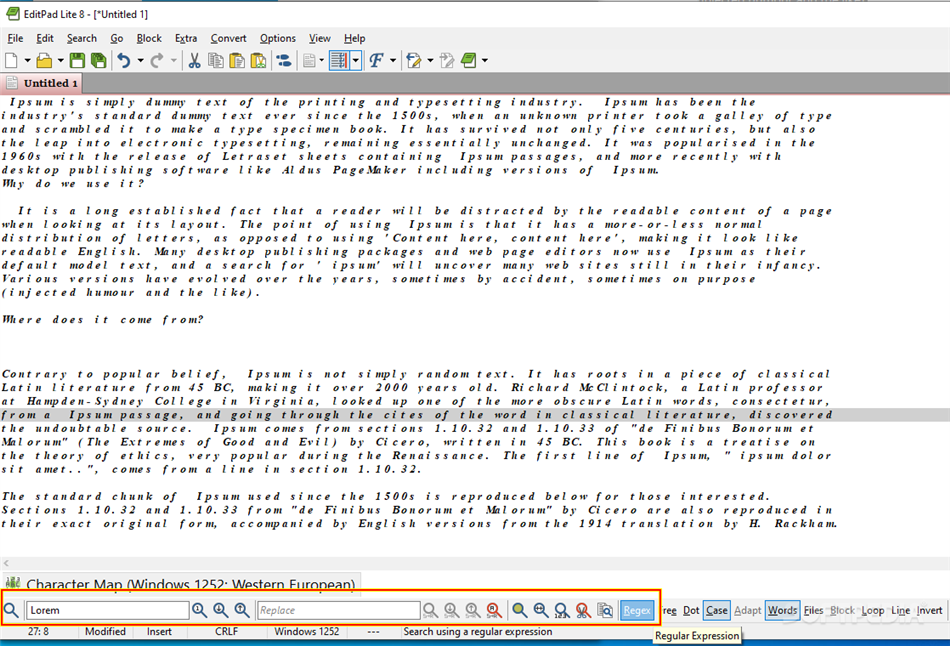

- #Editpad lite open recently closed file install
- #Editpad lite open recently closed file pro
- #Editpad lite open recently closed file software
- #Editpad lite open recently closed file download
An EditPad Pro file navigation scheme can be made to support any kind of text file.įile navigation schemes for EditPad Pro are based on regular expressions. None do so in a way as flexible and fully customizable as EditPad Pro. While many text editors support file navigation and text folding to some degree, they’re usually limited to a small set of popular programming languages.
#Editpad lite open recently closed file pro
Older versions of EditPad Pro and PowerGREP do not support file navigation schemes.

#Editpad lite open recently closed file download
In PowerGREP 4 or 5 you can download them via the Download Schemes button in the Editor section in the Preferences.
#Editpad lite open recently closed file software
If you are using EditPad Pro 6 or 7, you can download file navigation schemes within the software via Options|Configure File Types|Syntax & Navigation. Important: The file navigation schemes listed on this web site will work with EditPad Pro 8.x.x only. See the list of File Navigation Schemes available for download. Then, the custom scheme will be available in the File Navigation drop-down list in the file type configuration screen. Click the Refresh button to make EditPad Pro detect the new. Then go into Options|Configure File Types|Navigation. jgfns scheme file, you need to place it into the same folder as EditPadPro.exe. If you cannot use EditPad Pro’s built-in download mechanism, you can download the schemes with a web browser using one of the links below. Then, the custom scheme will be available in the drop-down list with file navigation schemes.
#Editpad lite open recently closed file install
EditPad Pro will then connect to the Internet and allow you to download and install any scheme with two mouse clicks. Go to the Navigation tab, and click the Download button. The easiest way to download and install a file navigation scheme is to pick Options|Configure File Types from the menu in EditPad Pro. In that case, you can simply download and install that scheme. If you’re lucky, somebody else may have already created a file navigation scheme to your liking. After creating your scheme, you can upload it to this web site (see below) and share it with other people. If your favorite file type is not supported, or its scheme doesn’t work the way you want, you can create your own fine navigation scheme for that file type.

for HTML files, there’s a scheme showing just the headings, and another showing all HTML tags. For many file formats, multiple schemes are provided. EditPad Pro ships with a large number of such file navigation schemes for many different file types. All it needs is a file navigation scheme. The best part is that the File Navigator can provide this magic for any kind of text file. This makes it easy to move blocks of text around, with far less scrolling. By folding sections under their headers in a web page, nested tags under their containing elements in an XML file, function bodies under their declarations in software source code, etc., you can keep a larger part of the file visible while editing. The File Navigator also prepares convenient foldable ranges, allowing you to hide parts of the file and make them visible again with just one click. Simply click on one of the items to jump to it in the file, or Shift+click to select it. They can be sorted in the original order in the file, or alphabetically. Those could be headings in a web page, tags in an XML file, news items in an RSS feed, classes and functions in software source code, etc. The overview indicates key parts of your files. Quickly Jump to The Right SpotĮditPad Pro’s File Navigator gives you an overview of the file you are editing in a collapsible tree. EditPad Pro’s file navigation features enable you to keep a clear overview of your files, and quickly jump to different parts. When editing large text files, you often need to move around between various parts of the files.


 0 kommentar(er)
0 kommentar(er)
